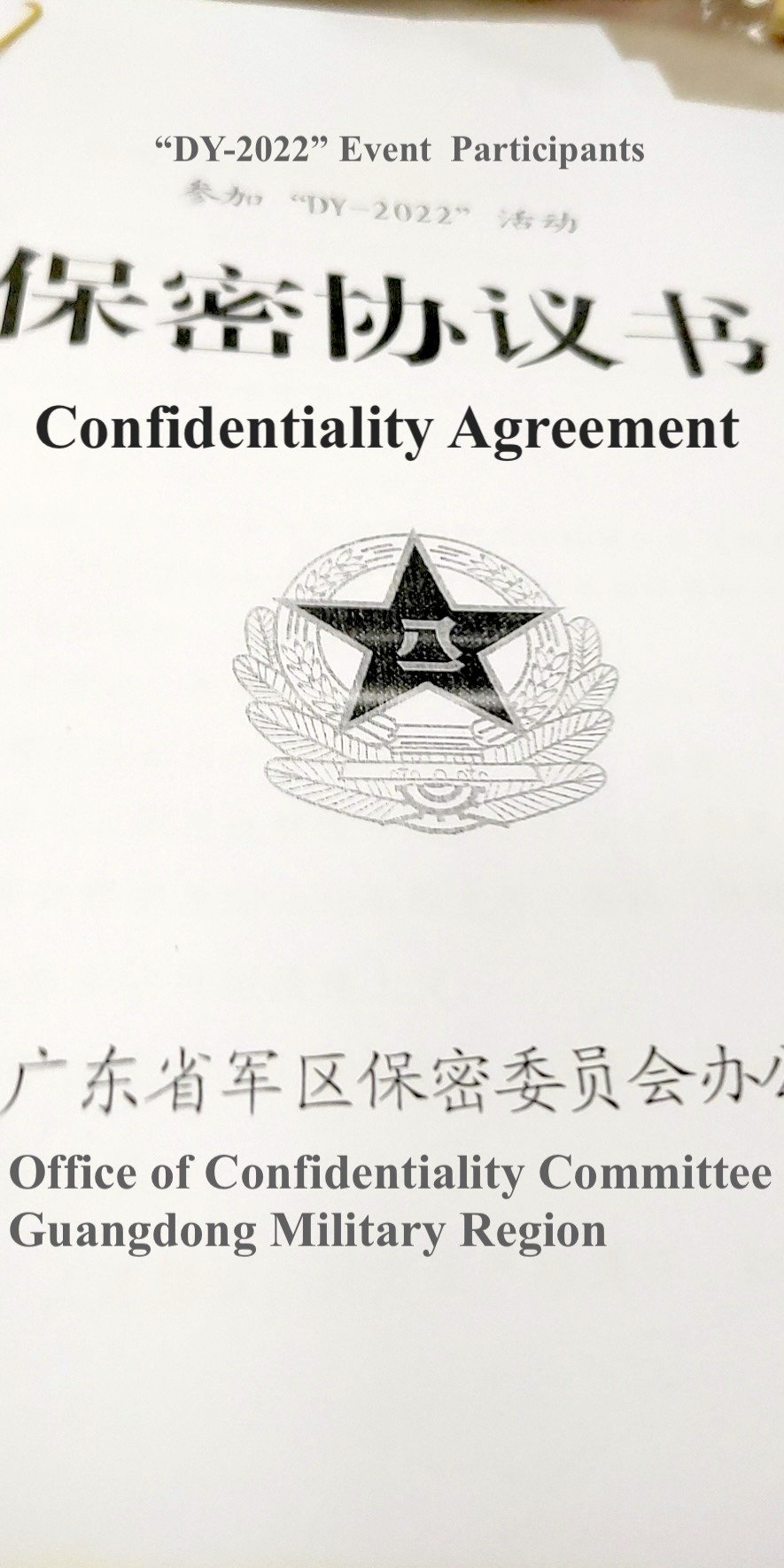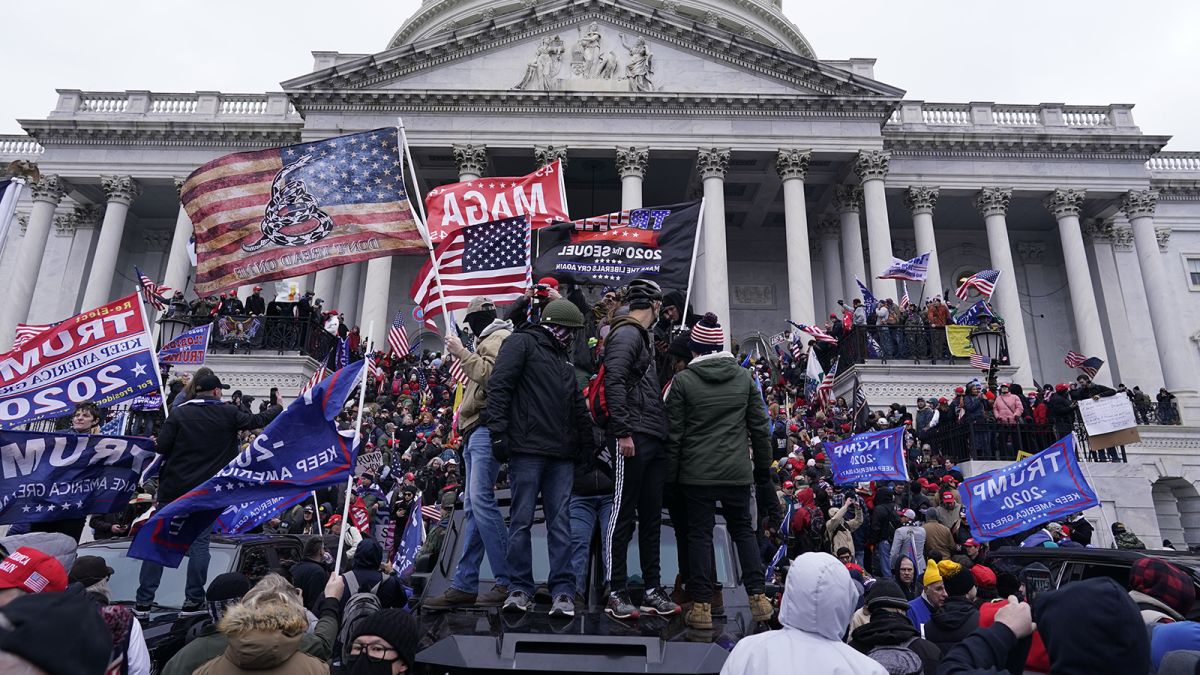Get Your Patriot911 Newsletter In Your Email Inbox
War mobilization meeting of the Southern war zone of the PLA: Guangdong province in the state of war
(Translator’s Note: The following is the English translation excerpt of a leaked secret audio file of the war mobilization meeting of the Standing Committee of the Provincial Communist Party Committee of China on May 14, 2022. The entire translation, including photos of some of the participants, the links to their bios, and links to the website of some enterprises, labs mentioned in the audio file were found and added by Chinese translator Jennifer Zeng, as well as the full translation in English and Chinese can be found here. The subheadings of the transcript were also added by Jennifer to make it more readable.)
Three Tasks and Suggestions for Normal to War Transition (corresponding time code on the audio file: 0:00)
After receiving the national mobilization order and Normal Time to War Defense instructions, the provincial government determined that the Guangdong Provincial Committee immediately hold an expanded meeting of the Standing Committee.

************
Comrades, we now convene an expanded meeting of the Standing Committee of the Provincial Party Committee, mainly to decide the province’s major issues related to the transition to a wartime system.
First of all, Comrade Zhang Hu(张虎) will convey the national mobilization order and the instruction spirit of the State Council Central Military Commission on transferring to the wartime system and put forward a Normal to War transition proposal.
************
I will first convey the mobilization order of the People’s Republic of China.
The main purpose of the expanded meeting of the Standing Committee is to convey the instructions of the superior order, clarify the intention, study the situation, and clarify the main work and general requirements of the Normal to War transition.
************
According to the spirit of the instructions from above, combined with the actual situation in our province, it is recommended that in accordance with the principle of a rapid and orderly Normal to War status transition, military planning, and mobilization, we will focus on the following three tasks.
First, the construction of a national defense mobilization command system
Second, the implementation of a wartime work mechanism
Third, wartime control preparation
Next, please discuss and make speeches.
*********
According to principles of being excellent at multiple domains, precise mobilization, and being led by combat concept, based on the mission and tasks of Guangdong, we propose three recommendations.
First, quickly build a joint command system between the military and the civil government.
Second, to coordinate the mobilization preparation of a strategic victory.
Focus in the Taiwan Straits Area:
Replenish military sources, ensure forward push, ensure loading, ensure the navigation, and ensure island seizing
Focus in the South China Sea Area:
Complementing blind areas, maintaining rights and interests, supporting transportation, protecting islands and reefs, and controlling sea areas
Accordingly, I believe that we should follow policy ideas and methods that are demand-led, unified, and combined, precisely carry them out, grasp the differences, and do a good job of strategic mobilization and implementation of preparations for a decisive victory
Third, highlight and transform the resource potential of new domains and new systems, to focus on effectively making up for the shortcomings of troops, and adhere to the scientific and technological mobilization to mobilize the implementation of preparations in a prominent position.
The provincial military regions should work together with relevant industry authorities, to further dig deeper into the transformation, reconnaissance and early warning, network attack and defense, search and rescue, cross-sea delivery, and other resource potentials in new domains and new systems, to ensure that the best resources for the final battle, to ensure that best resources are utilized to ensure a strategic victory.
********
Command Structure, Operational Decision-making Mechanism, And Four Information And Communication Links (Corresponding recording time point: 9:14)
After the meeting, the Provincial Party Committee General Office issued the minutes of the meeting. It is recommended that all departments follow the deployment of the meeting, immediately open a joint military-civilian command and operational command posts, specifically plan and deploy, and organize the province’s Normal to War transition work.
********
Chiefs, according to the State Council Central Military Commission’s Normal to War transition instructions, and the decision of the provincial party committee standing committee, the province has completed the establishment of the military command structure at all levels as of 18:00 on April 18.
1. The structure of the command. The provincial military-civilian joint command, the South China Sea area command post, and a number of special mobilization command posts have been set up.
The provincial military-civilian joint command is composed of elite personnel from the provincial party committee, the provincial government, the provincial military district, and the provincial national mobilization committee related enterprise units, as well as the armed police Guangdong General Force, the armed police mobile six detachments, sea defense 311 brigade. It was set up for the provincial military district combat command center, in due course will transfer to the provincial war command post.
The provincial military-civilian joint command, as the highest decision-making command organ in this jurisdiction to command the use of national defense mobilization resources and to organize the implementation of the mobilization, directly accepts the command of the eastern and southern war zones, focusing on planning and organizing strategic decision-making and national defense mobilization operations, as well as decision-making defense operations.
The South China Sea area command post is formed by elite forces of the command. It will be sent to the Zhanjiang area in due course, and focus on the prewar preparation in the South China Sea area, as well as organizational planning and command and control.
The special command post relies on the relevant military-civilian departments and industry systems and has constructed 12 special command posts including people’s air defense, traffic mobilization, national economic mobilization, public opinion propaganda, stability maintenance, and chaos control. They were set up by each lead unit. Under the unified command of the military-civilian joint command, they shall organize and implement mobilization tasks in each section, and organize and take command of special operations.
2. Composition of command post personnel. The provincial party committee secretary is the general commander of the provincial military-civilian joint command, the governor, the provincial military region commander, political commissar for the commander are commanders.
Two centers including the command and control and national defense mobilization have been set up, to take charge of three departments including management and coordination, political work, and rear area logistics support.
The command and control center is mainly responsible for ensuring that the commander set the determination of action before participating in the war, command and control the ground defense, maritime reconnaissance, and people’s air defense, and assist in anti-terrorism and stability operations.
The defense mobilization center is mainly responsible for guaranteeing the commander to set the mobilization determination, organizing and coordinating the implementation of national defense mobilization tasks, organizing mobilization support, assembly, transportation, handover, and other actions; the other three departments are responsible for the planning, organization, and coordination of related areas.
3. The command and decision-making operation mechanism. A unified leadership, sub-domain decision-making, coordination, and implementation of the command and decision-making and operation mode has been set up.
One, is the establishment of unified leadership of the command party committee, the first secretary is the provincial party committee secretary, and the secretary and deputy secretary are the provincial military district political commissar, governor, and provincial military district commander respectively. The party committee shall collectively study and make decisions on major national defense mobilization matters before joining the war.
Second, is the clear division of responsibility for sub-domain decision-making. After the party committee makes a decision, the commander of the division is responsible for the implementation. The governor is responsible for organizing the implementation of mobilization tasks. The commander of the provincial military district is responsible for organizing and commanding the action before participation in the war, in collaboration with the governor to organize the implementation of mobilization tasks. The political commissar of the provincial military district is responsible for organizing and leading political work, in collaboration with the commander to organize and command relevant actions.
Three, is the execution capability to collaborate and implement tasks. Routine coordination, contact, and consultation mechanism should be set up to meet and discuss the list of issues prior to action, give feedback on the mobilization process during the action, and jointly evaluate the effectiveness and the results after the action, to achieve fast and efficient command.
Fourth, is the command and insurance system. Based on the information security of the data and information room, a battalion scale information and communication force shall be set up at the provincial level, while a company scale and a platoon scale one should be set up at the municipal level and the county level respectively, to ensure the communication capability.
Using the means of the military and civilians at all levels, four main links have been established.
One, information link from the military commission joint command center to the war zone joint command center, to the province, city, and county military joint command center has been set up; mainly relying on the war zone joint command information system and the confidential information remote delivery system to be integrated into the joint command system.
Second, leadership, management, and information links from the mobilization department of the military commission to the provincial military district leadership management, mainly relying on the 509+ platform, national defense mobilization task information command system to assist mobilization organization command.
Third, the command communication links from the provincial, city, and county level military-civilian joint commands to the task teams, mainly relying on the ultra-short wave, Tiantong-1 satellite phone to establish mobile communications in motion.
Fourth, command and communication links from the army to the civilians, relying on the interconnection of the confidential password system on the Acer government intranet to deploy the national defense mobilization information system in relevant local civilian departments, and to introduce and import all kinds of civilian data to the military-civilian joint command, to open up the connection channel between the military and the civilian department.
End of report!
***************
Types and Quantities of Mobilization Tasks in Guangdong Province (Corresponding recording time point: 14:46)
We’ll skip the rehearsal on the start-up of the Normal to War transformation for today! Let’s move on to the next issue, the mobilization planning exercise.
Mobilization planning rehearsal
After receiving instructions from higher orders, the Guangdong joint military-civilian command held a party committee meeting to understand the task and judge the situation. All central departments have revised and improved their proposals, and are very determined. They have also made recommendations.
*************
Comrades, now we continue our meeting. After the orders and instructions on national defense mobilization and ground defense operations were issued by the eastern and southern theaters of war. We specifically held a party committee meeting to understand the orders, instructions and tasks, clearly put the relevant major issues to all centers and departments. In accordance with the spirit of the party committee, we revised the national defense mobilization and ground defense operation [plans]. Now let’s hold a task planning meeting to study the planning, mobilization and ground defense operations tasks. First, let’s ask the command and control center to communicate their understanding and the tasks.
***********
Commander, our tasks come from three areas.
One, the mobilization tasks issued to our province by the eastern and southern war zones totaling 20 categories and 239 items, mainly 1,358 detachments of various types with a total of 140,000 personnel, 953 ships of various types, and 1,653 units/sets of various unmanned equipment. Other resources include 20 airports and docks, 6 repair and shipbuilding yards, 14 emergency transfer centers, and resources such as grain depots, hospitals, blood stations, oil depots, gas stations, etc.
Two, the national defense mobilization recruitment office will recruit new military service personnel, retired military personnel, and special talents totaling 15,500 people from our province.
Third, the National Defense Commission clearly stated that our province shall coordinate the implementation of the seven types of national level warfare resources, including, mainly, 64 10,000-ton roll-on/roll-off ships, 38 aircraft, 588 train cars and 19 civil facilities including airports and docks,
Third, the national mobilization committee has made it clear that our province coordinates the implementation of the region’s national strategic resources, mainly including 64 10,000-ton trains/ships and boats, 38 aircraft, 588 train cars and airports, housing and other civilian facilities.
Through study and evaluation, we can summarize our province’s missions as follows.
First, to offer full support for the decisive battle at the Taiwan Strait. All resources in our province should be utilized so that all regions and cities can work together to ensure operations of defense combat clusters and their expansions, mobility, assembly, loading, combat, search and rescue, etc. In particular, we should mobilize and expropriate all sea and air transport capacity to protect the across sea cooperation of troops, to ensure that the island seizing troops can get across the sea, and more troops can follow to seize the island.
Second, to support the distant cruise. We will basically organize new-style ocean-going forces to conduct reconnaissance, submarine search, search and rescue outside the first island chain, to protect the forward deployment of rocket forces, support troops to rescue the wounded and repair ships and aircraft. We need to play a full role in these.
Third, to participate in the South China Sea interoperability, the mobilization of professional repair forces and air and sea transport forces to assist the troops to repair and set towers and markers, and the organization of militia fishing boats to respond to the infringement of the Vietnam, Philippines and Malaysia and other countries, to fight well the people’s war at sea.
Fourth, to assist Hong Kong and Macao to maintain stability, organize road traffic control, and mobilize high-speed passenger ships, helicopters and other air and sea transport to protect the rapid transit of troops. Organize port control, maintain and ensure the livelihood of Hong Kong and Macao, to prevent the enemies to use Hong Kong to create chaos for China.
Fifth, to maintain the stability of the rear, pull together the overall strength of the party, government, military, police and civilians as a whole, to help guard 61 important military objectives and 276 important civilian targets, maintain social order, cohesion and morale of the people, and continue to push the war forward.
Over!
**************
Strengthening Political Field Protection and Taking Full Advantage of the People’s War (Corresponding recording time point: 53:40)
I will make two points.
First, we need to strengthen the protection in the political field. Look at the recent several regional wars, especially the Russian-Ukrainian conflict war situation. If you look at the big picture, the United States and the West will try everything to slander us, smear us, in an attempt to confuse right and wrong, to shake our will to win a just and decisive battle. We must give full play to public opinion, legal struggle, psychological war, and militia teams to strengthen the guidance of public opinion and psychological protection, and cohesion of patriotic support for the positive energy of the military front.
Second, give full play to the advantages of the people’s war, fully learn from the experience of epidemic prevention and control in previous years, fully mobilize grass-roots organizations, widely mobilize cadres and masses, organize military, police, and civilian forces, launch grid control, create an atmosphere of national preparedness, improve the people’s ability to withstand war and disaster, so that the enemies and spies have no place to hide.
*************
Governor, are there any other comments from your side?
*************
No comments, please make up your mind commander!
*************
The Commander’s Decision On Defensive Operations (Corresponding recording time point: 54:56)
Just now, the command and control center proposed defensive operations, everyone expressed their opinions from different aspects. According to the order of the Southern Theater Land Operations Sub-Center, combined with the actual situation in our province, I decided on the defensive operation determination as follows.
First, on defense guidance, in principle, I agree with the command and control center’s recommendations. The ground defense operations of the southern war zone should fundamentally focus on the stability of the land area to offer support and responses to the main battlefield in the Taiwan Strait. Taking the situation of our province into consideration, we need to grasp two points
1. To ensure the security of important targets, to protect the stability of the joint warfare system, to support the response to the Taiwan Strait, and to deny and destroy enemy operations.
2. To maintain social stability and the mobilization potential. Offer strong support for the main battlefield in
Taiwan Strait from the side and the southern side with the overall security and stability of the jurisdiction.
Second, on important defense areas, in addition to Guangzhou, Shenzhen, Huizhou, and Yangjiang, Zhanjiang has Zhanjiang port, and Suining airport, It is a key area to stop and annihilate the enemy forces from the South China Sea direction. So it needs special defense.
Third, on the deployment of defense and the use of active-duty forces.
In principle, I agree with the second option. The important targets specified by the war zone are key to the stability of the joint warfare system, it is necessary to deploy elite troops to control the key points to ensure safety. Mobile combat forces, while offering support to sub-districts, must do a good job of deploying troops to focus on handling unexpected situations.
In addition, I make two more adjustments.
First, the use of nuclear and chemical rescue forces. The province’s nuclear rescue force is limited. While relying on Shenzhen, Jiangmen, Yangjiang’s own forces, we need to recruit professional forces from the Guangzhou area, and form a nuclear and chemical rescue force. This force shall coordinate rescue needs in Guangzhou, and implement mobile rescue, while the command center should recruit more internal nuclear and chemical experts to provide decision-making consultancy for rescue operations.
Second, the use of network protection forces. In principle, network protection should mainly be done by its own security team. Provincial network information protection group shall offer support, support forces must be enhanced.
In addition to the technical support detachment, we need to increase the preparation of network experts to provide support for network security incidents.
For other content, I agree with the recommendations of the command and control center.
After the meeting, based on the spirit of the meeting, we need to rapidly organize and report our province’s mobilization determination and defensive operations determination.
Meeting adjourned!
*************
According to the deployment of the provincial joint military-civilian command, the joint command post of the army in each city should hold a symposium to understand the task and gather intelligence. All levels should move together to synchronize the planning.
Chief, the whole meeting is over!
JOIN US @Patriot911News on our Telegram, Twitter, Facebook Page and Groups, and other social media for instant news updates!
Patriot911News depends on your support as a patriot-ran conservative breaking news headlines website. Donate now
Author
- Lucas Collins is a writer for Patriot911News. He strives to write timely, thought-provoking articles.
Latest Posts
 BreakingAugust 12, 2022BREAKING: Kari Lake shares homeless plan at press conference outside Phoenix homeless camp
BreakingAugust 12, 2022BREAKING: Kari Lake shares homeless plan at press conference outside Phoenix homeless camp NewsAugust 10, 2022Trump-endorsed Tim Michels defeats Pence-endorsed for Governor in WI primary
NewsAugust 10, 2022Trump-endorsed Tim Michels defeats Pence-endorsed for Governor in WI primary BreakingAugust 1, 2022JUST IN: Capitol rioter sentenced to 7 years of prison
BreakingAugust 1, 2022JUST IN: Capitol rioter sentenced to 7 years of prison BreakingJuly 29, 2022JUST IN: Wisconsin activist says he committed voter fraud to expose potential voter fraud
BreakingJuly 29, 2022JUST IN: Wisconsin activist says he committed voter fraud to expose potential voter fraud







